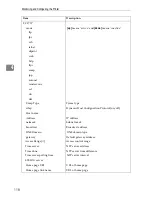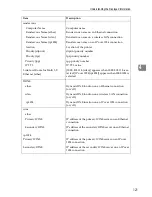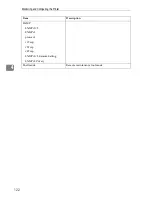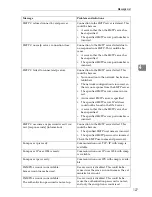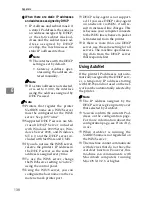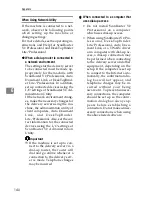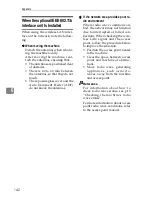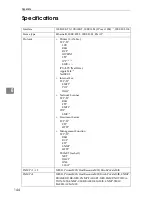
Special Operations under Windows
132
5
lpr
❖
❖
❖
❖
When specifying a printer by IP ad-
dress
c:> lpr -Sprinter's IP ad-
d r es s [ - Po pt i on] [- ol ]
\pass name\file name
❖
❖
❖
❖
When using a host name instead of an
IP address
c:> lpr -Sprinter's host
n a m e [ - P o p t i o n ] [ - o l ]
\pass name\file name
When printing a binary file, add
the "-ol" option (lowercase O, and
lowercase L).
When using a printer with the host
name "host" to print a PostScript file
n a m e d " f i l e 1 " l o c a t e d i n t h e
"C:\PRINT" directory, the command
line is as follows:
c:> lpr -Shost -Pfiletype=RPS
-ol C:\PRINT\file1
rcp
First, register the printer's host name
in the hosts file.
c:> rcp [-b] \pass name\file
name [pass name\file name...]
printer's host name:[option]
Note
❒
In file names, "*" and "?" can be
used as wild cards.
❒
When printing a binary file, add
the “-b” option.
When using a printer with the host
name "host" to print a PostScript file
named "file 1" or "file 2" located in the
"C:\PRINT" directory, the command
line is as follows:
c:> rcp -b C:\PRINT\file1
C:\PRINT\file2 host:file-
type=RPS
Reference
For details about registering the
printer's host name in the hosts
file, see p.130 “Using a Host Name
Instead of an IP Address”.
Summary of Contents for DSm651
Page 10: ...4...
Page 14: ...Getting Started 8 1...
Page 140: ...Special Operations under Windows 134 5...
Page 155: ...Copyright 2004...

